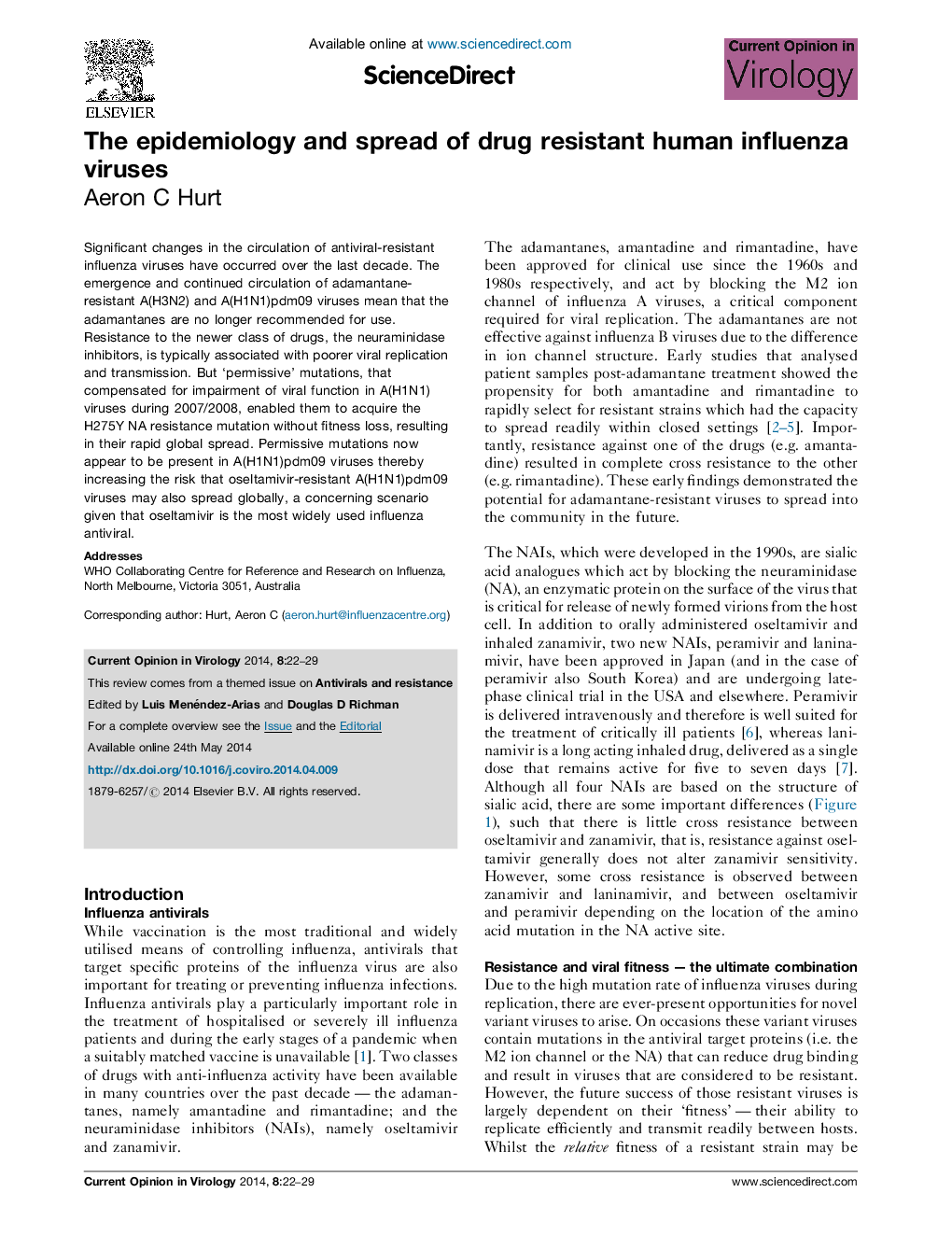| Article ID | Journal | Published Year | Pages | File Type |
|---|---|---|---|---|
| 5806761 | Current Opinion in Virology | 2014 | 8 Pages |
â¢Changes in the circulation of antiviral-resistant influenza viruses have occurred.â¢All human influenza viruses are currently resistant to the adamantanes.â¢Little resistance has been observed to zanamivir or laninamivir.â¢The potential for oseltamivir-resistance in the A(H1N1)pdm09 virus is concerning.â¢Permissive mutations mean that oseltamivir-resistant viruses can retain fitness.
Significant changes in the circulation of antiviral-resistant influenza viruses have occurred over the last decade. The emergence and continued circulation of adamantane-resistant A(H3N2) and A(H1N1)pdm09 viruses mean that the adamantanes are no longer recommended for use. Resistance to the newer class of drugs, the neuraminidase inhibitors, is typically associated with poorer viral replication and transmission. But 'permissive' mutations, that compensated for impairment of viral function in A(H1N1) viruses during 2007/2008, enabled them to acquire the H275Y NA resistance mutation without fitness loss, resulting in their rapid global spread. Permissive mutations now appear to be present in A(H1N1)pdm09 viruses thereby increasing the risk that oseltamivir-resistant A(H1N1)pdm09 viruses may also spread globally, a concerning scenario given that oseltamivir is the most widely used influenza antiviral.
